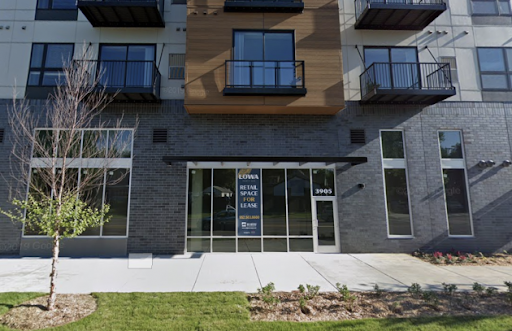For more than two years, SV@Home has advocated for the elimination of San Jose’s requirement for many affordable housing developments to include ground-floor commercial space. “We believe that eliminating commercial requirements is the most high-impact action that this council can take to remove city imposed barriers to affordable housing development,” said Mathew Reed, Director of Policy for SV@Home. The requirement reduces space available for affordable homes, is often difficult or impossible to finance, and is expensive for potential commercial tenants to finish. Now this policy that rendered many potential affordable homes infeasible is gone!
BY: Tran Nguyen┃San Jose Spotlight
PUBLISHED: December 14, 2021
San Jose is eliminating a long-standing development requirement to make way for more affordable housing amid a growing homelessness crisis.
Under a decades-old policy, affordable housing projects built within the city’s urban villages, or designated areas planned around public transportation, must dedicate the ground floor to commercial spaces—something lawmakers hoped would spur job growth and urban activities in key transit areas.
The San Jose City Council on Tuesday unanimously voted to remove that requirement, as some lawmakers say it runs counter to San Jose’s goal to build as much affordable housing as possible. The city will work with nonprofit partners to find and encourage commercial opportunities in housing projects instead of requiring them. San Jose will also seek to change the policy for all affordable housing projects in the city early next year.
“This is long overdue, that we really take a look and prioritize affordable housing,” Councilmember Pam Foley said. “We’ve heard from affordable housing developers how problematic it is to be required to build commercial property, particularly when they may have to pocket those finances themselves, which makes it’s difficult.”
The policy change comes as San Jose continues to drag behind in building affordable housing. The city has built only 506 below-market units since 2018—falling way short of its goal to build 10,000 affordable units by 2023.
The housing crisis is driving rent in San Jose through the roof, making it the second most expensive place to rent in the U.S. Meanwhile, the homelessness crisis is ever-growing. Nobody knows exactly how many people have ended up in the streets since the pandemic, but advocates said this year saw a record number of unhoused people die.
Councilmember Raul Peralez and Mayor Sam Liccardo hoped to keep some exemptions to the commercial requirement. Peralez said neighborhoods with existing small business corridors, such as Little Portugal and Guadalupe Washington, have seen success with mixed-use developments.
“The communities ask repeatedly that retail be included into these new projects, not only for the new residents, but for the existing community as well,” he said.
But San Jose can’t force an affordable housing development to include commercial spaces if developers request requirements to be waived to reduce costs, according to a letter from the California Department of Housing and Community Development the city received Tuesday.
Planning Deputy Director Michael Brilliot proposed the city exclude affordable housing projects from more than 400 sites across the city to preserve space for mixed-use developments. These sites include plots that are at least two acres and those at several major intersections. San Jose still has roughly 2,070 sites for affordable housing after the exclusion, he added. City officials will come back with a more refined list at a later date.
Some residents worry the loss of commercial spaces will worsen the quality of life in their neighborhoods.
“I’m in favor of adding more affordable housing,” resident Marni Kamzan said. “But by allowing developers to eliminate commercial spaces means the community living in these projects will need to travel for services and food. I thought this was a no-no.”
Incentivizing, not requiring
Over the past five years, Fremont-based affordable housing developer Allied Housing gave up building 500 to 1,000 affordable units because of the city’s policy requiring commercial components.
“There were properties that were available for sale and would have been great affordable housing sites, but because of that commercial component, they became infeasible,” Jon White, chief real estate officer of Allied Housing, told San José Spotlight.
The mixed-used development policy is common, but the South Bay only has a few success stories of such policy, such as Santana Row and Castro Street in Mountain View, White said.
Local housing advocates are rallying behind the policy change.
“We believe that eliminating commercial requirements is the most high-impact action that this council can take to remove city imposed barriers to affordable housing development,” said Mathew Reed, director of policy of SV@Home.
Despite the city’s hope for vibrant and bustling neighborhoods, storefronts created by the policy often end up vacant and contribute nothing to the communities around them, Councilmember Dev Davis said.
“I have a big concern about building commercial spaces that then stay vacant for a long period of time,” she said. “I’m glad we’re now talking about how we can incentivize it rather than require it. I think that’s the way to go.”
Councilmember David Cohen said the blanket requirement for commercial spaces has hurt affordable housing production in San Jose.
“Obviously we all want walkable communities with mixed-use (buildings) bringing together housing, jobs and transit,” Cohen said. “But we’re so far short of affordable housing goals that we want to make sure we don’t make it harder to build affordable housing.”

